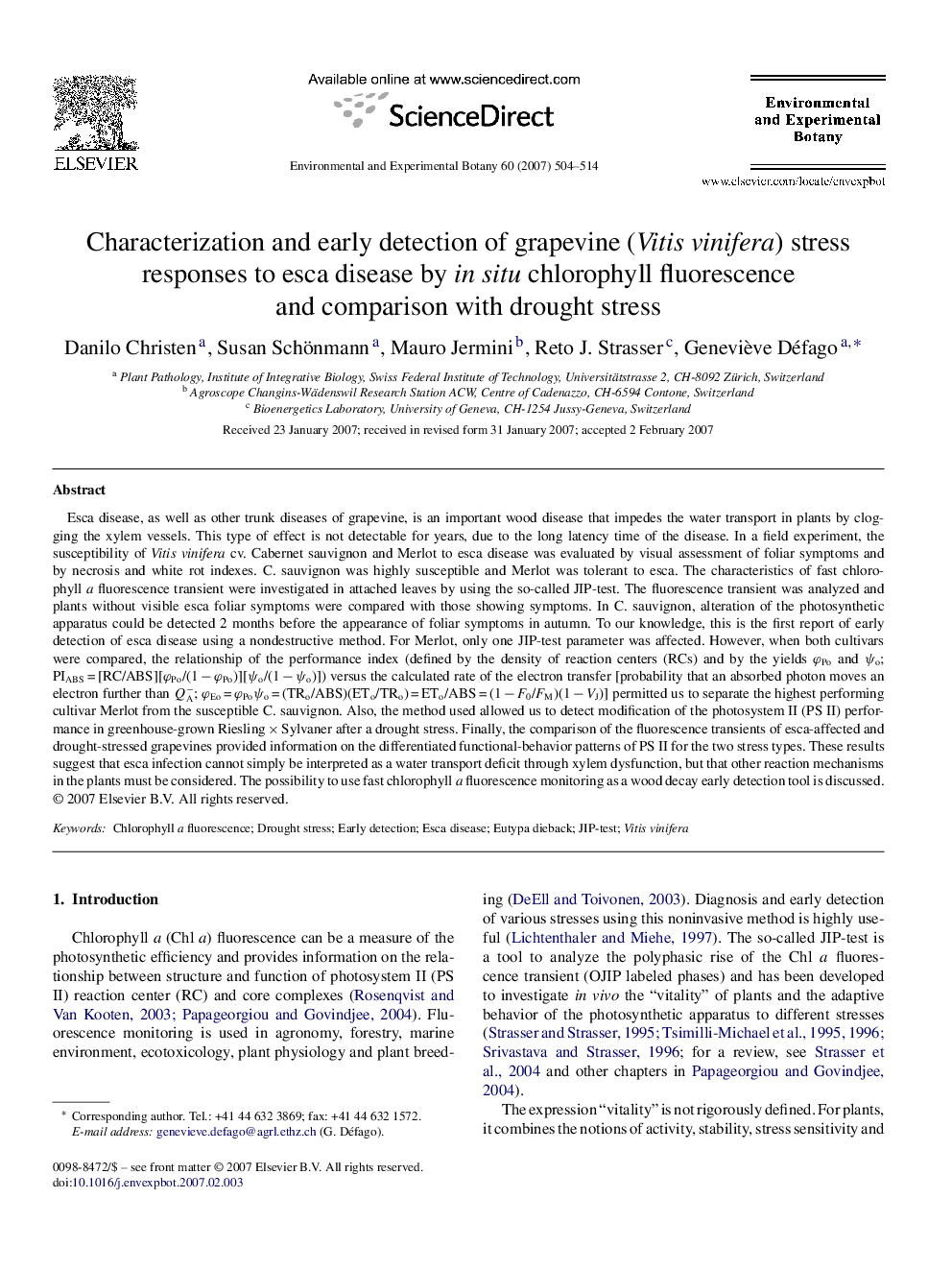| Article ID | Journal | Published Year | Pages | File Type |
|---|---|---|---|---|
| 4555481 | Environmental and Experimental Botany | 2007 | 11 Pages |
Esca disease, as well as other trunk diseases of grapevine, is an important wood disease that impedes the water transport in plants by clogging the xylem vessels. This type of effect is not detectable for years, due to the long latency time of the disease. In a field experiment, the susceptibility of Vitis vinifera cv. Cabernet sauvignon and Merlot to esca disease was evaluated by visual assessment of foliar symptoms and by necrosis and white rot indexes. C. sauvignon was highly susceptible and Merlot was tolerant to esca. The characteristics of fast chlorophyll a fluorescence transient were investigated in attached leaves by using the so-called JIP-test. The fluorescence transient was analyzed and plants without visible esca foliar symptoms were compared with those showing symptoms. In C. sauvignon, alteration of the photosynthetic apparatus could be detected 2 months before the appearance of foliar symptoms in autumn. To our knowledge, this is the first report of early detection of esca disease using a nondestructive method. For Merlot, only one JIP-test parameter was affected. However, when both cultivars were compared, the relationship of the performance index (defined by the density of reaction centers (RCs) and by the yields φPo and ψo; PIABS = [RC/ABS][φPo/(1 − φPo)][ψo/(1 − ψo)]) versus the calculated rate of the electron transfer [probability that an absorbed photon moves an electron further than QA−; φEo = φPoψo = (TRo/ABS)(ETo/TRo) = ETo/ABS = (1 − F0/FM)(1 − VJ)] permitted us to separate the highest performing cultivar Merlot from the susceptible C. sauvignon. Also, the method used allowed us to detect modification of the photosystem II (PS II) performance in greenhouse-grown Riesling × Sylvaner after a drought stress. Finally, the comparison of the fluorescence transients of esca-affected and drought-stressed grapevines provided information on the differentiated functional-behavior patterns of PS II for the two stress types. These results suggest that esca infection cannot simply be interpreted as a water transport deficit through xylem dysfunction, but that other reaction mechanisms in the plants must be considered. The possibility to use fast chlorophyll a fluorescence monitoring as a wood decay early detection tool is discussed.
